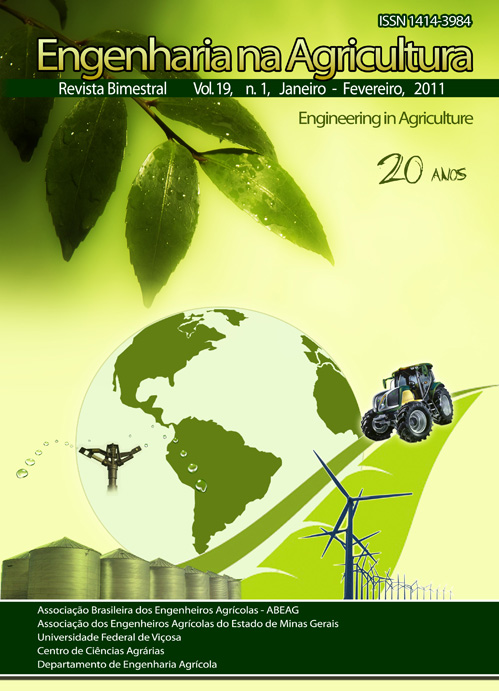QUALITY OF STORED CORN INFESTED BY Sitophilus zeamais AND Tribolium castaneum
DOI:
https://doi.org/10.13083/reveng.v19i1.276Keywords:
perdas qualitativas, infestação, armazenamento.Abstract
Corn grain quality during storage was evaluated due to the damages caused by Tribolium castaneum and Sitophilus zeamais infestation and the association between them. Corn grains harvested with 20% w.b. moisture content were dried, fumigated and stored in 40-kg portions into 60 metallic 229-L metal containers under room conditions in Viçosa-MG. Fifteen containers were infested with 20 adults of S. zeamais, 15 with 20 adults of T. castaneum, 15 were infested with 10 adults of S. zeamais and 10 of T. castaneum, and 15 were kept without infestation. Soon afterwards and every 45 days, during 180 days, 1-kg samples were collected for grain evaluation in relation to moisture content, impurity content, foreign materials, apparent specific mass, damage index, percent of infested grains and content of insect fragments. The apparent specific mass only varied with storage period. Impurity content and foreign matter, damage index, percentage of infested grains and estimate of the number of insects in the grain mass varied in grains infested with S. zeamais and the association S. zeamais with T. castaneum. The results led to the conclusion that corn infestation by S. zeamais and association S. zeamais with T. castaneum, during storage, reduces grain final quality because of the increase in the incidence of damaged grains, presence of insect fragments and infestation index, which are qualitative parameters commercially adopted for corn grain quotation in different consumer markets.Downloads
Downloads
How to Cite
Issue
Section
License
Authors who publish with this journal agree to the following terms:
The author(s) authorize(s) the publication of the text in the journal;
The author(s) ensure(s) that the contribution is original and unpublished and that it is not in the process of evaluation by another journal;
The journal is not responsible for the views, ideas and concepts presented in articles, and these are the sole responsibility of the author(s);
The publishers reserve the right to make textual adjustments and adapt texts to meet with publication standards.
From submission, the author is fully conceding the paper's patrimonial rights to the publication, but retaining the owner of its moral rights (authorship and paper's identification) according to Creative Commons Attribution-Noncommercial.








 Licensed by
Licensed by 